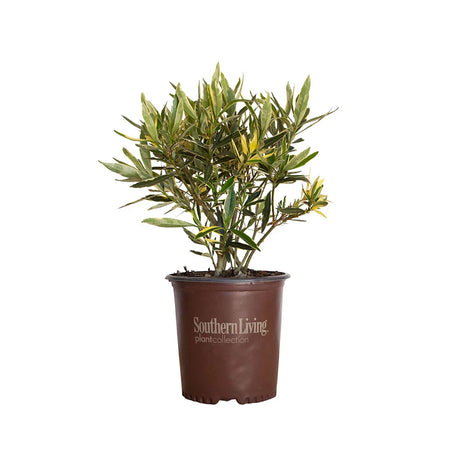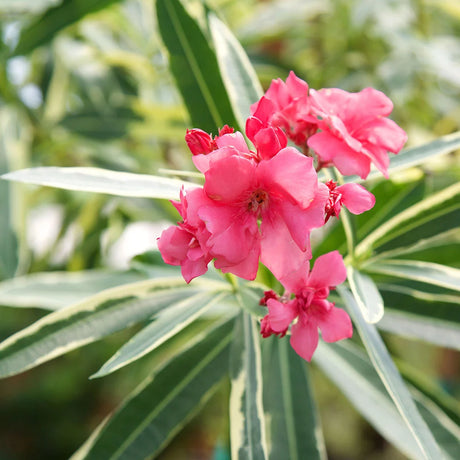Southern Living Plant Collection
(7)From $36.98Unit price /UnavailableIn stock (424)
Oleanders (Nerium oleander) are beautiful and hardy evergreen shrubs or small trees that can be a great addition to any garden or landscape. They are prized for their fragrant, showy flowers that bloom throughout the summer and fall in shades of pink, white, red, and yellow. Here are some reasons why you should consider growing oleanders and how to care for them.
- Easy to Grow: Oleanders are relatively easy to grow and require minimal maintenance. They are tolerant of a wide range of growing conditions, including full sun to partial shade, and can adapt to various soil types as long as they are well-draining.
- Drought Tolerant: Once established, oleanders are drought-tolerant and can survive extended periods without water. This makes them an excellent choice for low-maintenance landscapes or areas with limited water resources.
- Attracts Wildlife: Oleander flowers are a favorite nectar source for butterflies, hummingbirds, and bees, making them a great choice for wildlife-friendly gardens.
- Versatile: Oleanders can be grown as small shrubs or trained into small trees, making them versatile plants that can be used in a variety of landscape settings, including hedges, screens, or as a focal point in a garden bed.
- Planting: Oleanders can be planted in the spring or fall. Choose a sunny location with well-draining soil, and make sure to space the plants at least six feet apart to allow for proper air circulation.
- Watering: Water newly planted oleanders regularly until they become established. Once established, they can survive extended periods of drought but will benefit from occasional deep watering during prolonged dry spells.
- Fertilizing: Oleanders don't require much fertilizer, but a slow-release fertilizer applied in the spring can help promote healthy growth and flowering.
- Pruning: Oleanders benefit from regular pruning to promote a bushy, compact growth habit and to remove any dead or diseased wood. Prune them in late winter or early spring before new growth begins.
- Care: Oleanders are generally pest and disease-resistant, but they can be susceptible to scale insects and sooty mold. Regularly inspect the plants and treat any infestations promptly.


